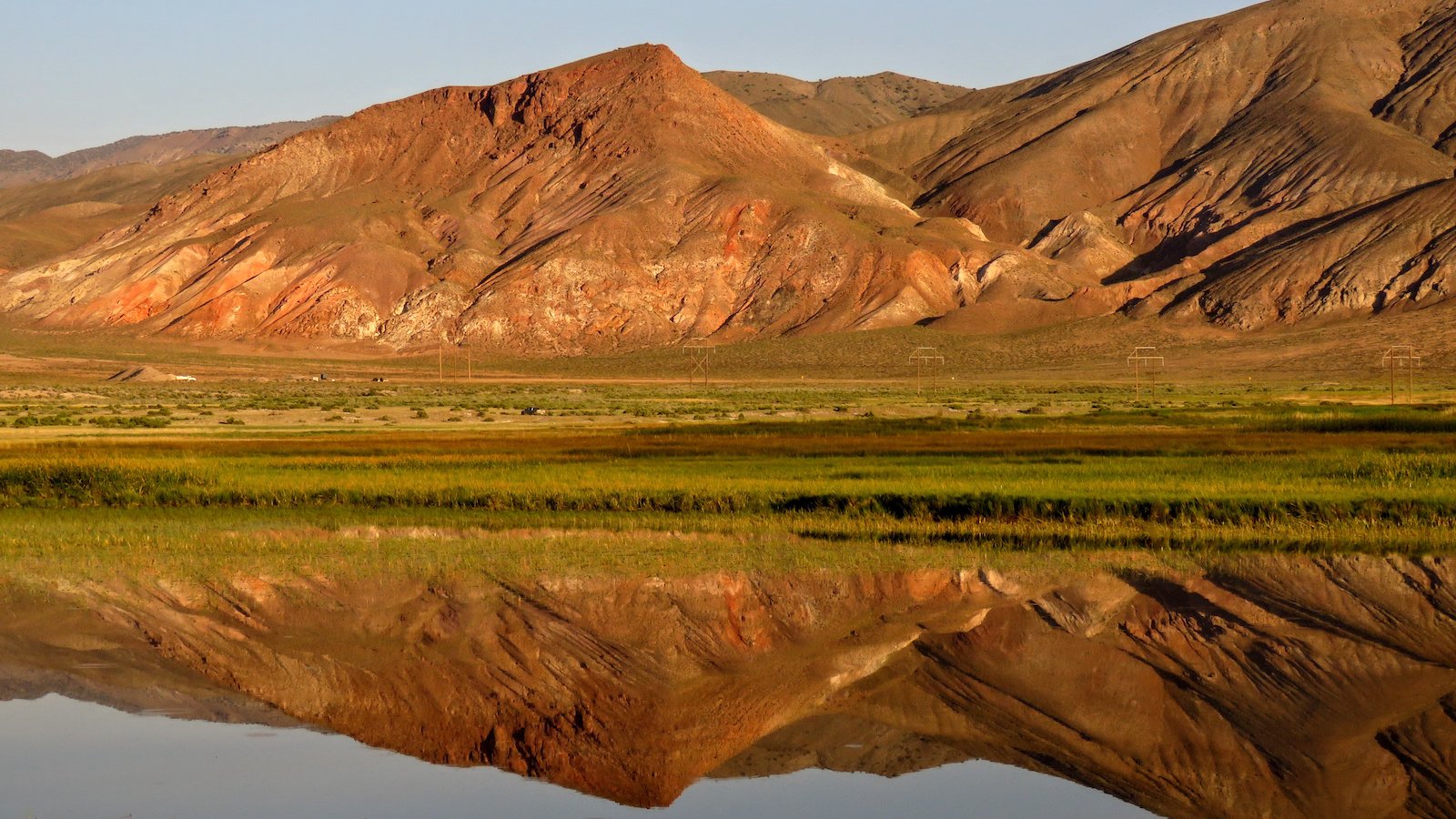Heat exhaustion can strike within hours. Heat stroke can be fatal. Here’s how to recognize the toll the temperature is taking on your body—and what to do about it.
Published August 2, 2023
8 min read
Recent weeks have seen record-breaking heat on three separate continents. The United States clocked the largest number of heat warnings ever, parts of China simultaneously roasted, and Europe’s temperatures spiked so high residents unofficially dubbed the heat wave Cerberus, for the monster in Dante’s Inferno.
Thanks to climate change, these blazing firsts—including Earth’s average hottest day, on July 3rd—will likely soon be surpassed, so it’s important to understand the ways heat damages the human body and how to prevent them, says Kurt Shickman, director of extreme heat initiatives at the Adrienne Arsht-Rockefeller Foundation Resilience Center in Washington, D.C. “Heat is extremely dangerous, and climate change will make more areas prone,” he says.
Whether extreme temperatures can hurt—and sometimes kill—involves numerous factors. The thermometer is key, of course, but humidity matters too, because humans primarily cool our bodies through the evaporation of sweat. Although this technique works well for the dry African savannas where humans evolved, it’s much less effective in swampy Washington, D.C., subtropical South Florida, and many other parts of the U.S., says W. Jon Williams, a heat health expert at the National Institute for Occupational Safety and Health at the U.S. Centers for Disease Control and Prevention. (Humidity is accounted for in the heat index or feels like temperatures on weather apps.)
It doesn’t take long for heat to injure the body, which is why recognizing the signs of heat illness—and knowing the actions one must take—can save lives.
Heat rash develops within hours on humid days
Heat rash, also known as prickly heat, are small, pimple-like blisters that erupt when sweat trapped under tight clothing can’t evaporate so pores become clogged. The rash generally appears on the chest, neck, and/or armpits when a shirt is snug, or around the breasts or groin if a bra, shorts, or underwear are tight.
Heat rash differs from sunburn because sun exposure is not required; and the blisters typically aren’t dangerous.
As soon as the rashes are spotted, people should move to a cool environment and remove troublesome garments. Placing cool compresses on the skin may speed healing. Most cases resolve within hours, but if redness or pain lingers, or if fever appears, the area may have become infected, requiring antibiotics.
Heat cramps happen during outdoor exertion
Heat cramps are painful, involuntary spasms following strenuous activity outside. They are an early sign your body isn’t coping well with the heat, says Kristopher Paultre, a sports medicine physician at the University of Miami.
Cramps are triggered when heavy sweating causes the loss of important electrolytes; a sudden drop in sodium, potassium, and calcium can trigger involuntary contractions. The muscles most likely to cramp are those engaged during the person’s activity. “If you’re running in the heat, you’re more likely to have cramps develop in the legs,” Williams says. Each cramp lasts several minutes.
Ending the cramps—and ensuring they don’t advance to more severe heat illnesses—requires stopping the exertion and moving to a cool location. Lost sodium is best restored by eating salty foods like potato chips, but not by taking salt tablets, an old folk remedy. Such tablets draw fluids into the gut and away from a cardiovascular system that is already strained by the heat, Williams says.
Proper hydration can prevent heat cramps. Drinking plain water is sufficient if outdoor activities are planned for two hours or less, since the body self-regulates electrolytes during that time (including by capturing secreted minerals in sweat and returning them to the blood). After that, electrolyte sports drinks that contain these minerals should be consumed.
Heat exhaustion can strike within hours
Heat exhaustion occurs when the body’s efforts to maintain its standard 98.6°F temperature starts to sputter. During an episode of heat exhaustion body temperatures can rise as high as 102°F, and the symptoms become much more severe than muscle cramps.
Some symptoms of heat exhaustion stem from the body’s increasingly frantic effort to lower the temperature: sweating intensifies and urine output decreases to hoard fluids. Intense fatigue or even fainting happens, to enforce rest. “If you’re working hard in a hot environment, you’re generating a lot of metabolic heat in addition to the high environmental heat. If you take away one of the burners your body is not going to be as hot,” Williams explains.
Additionally, electrolytes are increasingly depleted—triggering headaches and vertigo—and the higher body temperature promotes nausea and irritability.
Treating heat exhaustion involves immediately moving to a cool location—ideally in air conditioning—sipping water, and swiftly lowering body temperature by taking a tepid shower or bath or placing ice packs on the torso. During many Florida college athletic tournaments, tubs of ice sit at the ready should overheated players need to dunk, Paultre says.
Once core temperatures recover, most people don’t require medical care. People with heart disease, though, might head to the emergency room to ensure no damage resulted, Williams advises.
For one in 10 people who suffer this, whether because they continue their physical activity or because circumstances prevent them from getting relief, their condition rapidly escalates to heat stroke, Williams says.
Heat stroke immediately follows heat exhaustion
Heat stroke happens when the body can no longer control its internal body temperature, which rises to 104°F or higher. Skin becomes red and hot to the touch, and sweating ceases. “At this point, the body has stopped trying to cool itself. It’s given up,” Paultre says.
This condition is so serious it kills up to 65 percent of people who reach this state. Classic cases include an elderly person without AC who dies after days of unrelenting heat and humidity, or a child left in an enclosed car who perishes within minutes.
Outdoor workers and athletes experience exertional heat stroke. Here, a body forced to choose between keeping the heart and muscles working or lowering high body temperature generally prioritizes the former. Men, who are more likely to work outdoors, comprise more than two-thirds of heat deaths in the U.S. Last summer’s European heat wave killed 61,000 people, most of them younger men and older women, scientists recently concluded.
High body temperatures affect the central nervous system, causing delirium, seizures, and, often, loss of consciousness. Clots form in the cardiovascular system and inflammation spreads throughout the body, damaging the kidneys, heart, and other organs.
A person experiencing heat stroke is unable to help themselves. They survive only when those around them call 911, move them from the heat, and douse their body with ice and/or cold water. (Forcing them to drink is unwise, Williams says, since fluid levels must be assessed by professionals.)
Those who do recover often suffer permanent organ damage.
“Someone who experiences heat stroke will spend a long time in the hospital,” Williams says. What’s more, their body will likely have difficulty regulating temperature for months or longer, making protective actions from future heat even more important.
General strategies for staying safe
People can protect themselves from extreme heat by spending at least part of scorching days in an air-conditioned environment (local governments often open cooling centers for residents without access to AC); staying in shade when outdoors; avoiding exertion (whether for work or athletics) at the hottest times of the day; and ensuring adequate hydration.
Note: This article have been indexed to our site. We do not claim legitimacy, ownership or copyright of any of the content above. To see the article at original source Click Here













